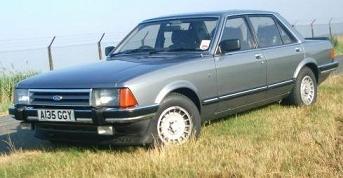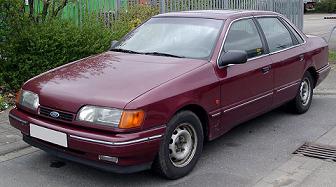
Matthew Leitch, educator, consultant, researcher
Real Economics and sustainability
Psychology and science generally
OTHER MATERIALWorking In Uncertainty
The 1985 Ford Granada
If you have an unusual knowledge of Ford motor cars you will know that the 1985 Granada range in the UK included a model called the Scorpio, now regarded as one of the ugliest cars ever made. (The Telegraph newspaper considered a later version of the Scorpio the second ugliest car ever made, after the very practical Toyota Yaris Verso.)
In my personal opinion the 1985 Granada looked boring and ugly even then, compared to most cars and especially the styling it replaced. What were they thinking?
Here's the 1984 Granada (2.8 Ghia X) on the left with the 1985 Granada Scorpio on the right.


However, the advertisers at Ogilvy & Mather back in 1985 were probably more worried about some other issues. For several years, Ford's large share of the UK market had been slowly declining, along with profits and overall reputation. In 1982 they had introduced the Ford Sierra, but buyers were uneasy with its styling. The new Granada range for May 1985 was the first major launch since then, and styled with the same ugly lines as the Sierra.
In past years the Ford Granada had dominated the ‘large car’ segment of the market but its share of the total car market had slipped from 3.04% in 1979 to 1.33% in 1984, taking it down past the second most popular large car, the Volvo 200/700. Overall, the large car segment had halved in size from 1978 to 1984.
The new Granada was a totally new car with a new hatchback shape that early research had shown was unpopular with some existing Granada owners. There was no estate version, though apart from that the range was the same as the existing Granada, with its dwindling sales.
The only good news was that the new cars had some new technical features: anti-lock braking system as standard, flush fitting windows, and high security locks.
The advertisers relied heavily on research to help them find an effective way to promote the new Granada. Extensive desk research and quantitative and qualitative consumer research showed a tendency to distinguish two or three levels of ‘large car’, based on price, size, overall status, and so on. On this basis Ford opted to cut the range from 14 models to just 7 and clearly separate them so that there was no perceived overlap. The Ghia and GL badges were used for models in the bottom two zones, in a shameless attempt at boosting their status, while the name Scorpio was used with the top model.
The advertising itself was developed through three stages of research (1. positioning, 2. ideas, and 3. executions) with buyers, fleet operators, and Ford dealers.
The positioning that tested best was ‘a significant improvement on the old’, which seemed to work with current Granada owners and non-owners. They also found that they needed to help buyers understand the benefits of the new technological features. According to research, this was best done using a variety of advertisements, one for each technical feature, instead of the usual approach of having one advertisement that covered them all.
The Ghia and GL models were advertised heavily on TV, with page ads running a little later in upmarket publications to advertise the Scorpio.
The effect of this advertising of the new Granada was a 30% increase in sales, taking it back up past the competing vehicle from Volvo. There were big jumps in research indicators like ‘intention to purchase as next car’, recall of advertising, next car consideration, perceived roadholding, safety, reliability,and quality of finish. Buyers even came to see safety as more important than they had previously.
| Working In Uncertainty observations |
In anything that rests on the perceptions and reactions of people, our own intuition about what will work is rarely reliable. We're just not as good at predicting other people as we think we are. Not only is research on any question of marketing or style important, but the trend in advertising research has been towards more and more detailed information, giving insight into audience reactions from moment to moment during advertisements. With help from research-oriented advertising agency, Ogilvy & Mather, Ford successfully advertised an ugly car by focusing on its advantages. It is difficult to see how they could have done this without research to justify choices like changing the range, allocating names, and putting one feature in each advertisement, against the usual habit at the time. If only Ford had done similar studies to guide the choice of styling for the new cars! |
|---|
(Source of information: ‘20 Advertising Case Histories’ edited by Charles Channon, published 1989 by Cassell Educational Limited.)
Made in England